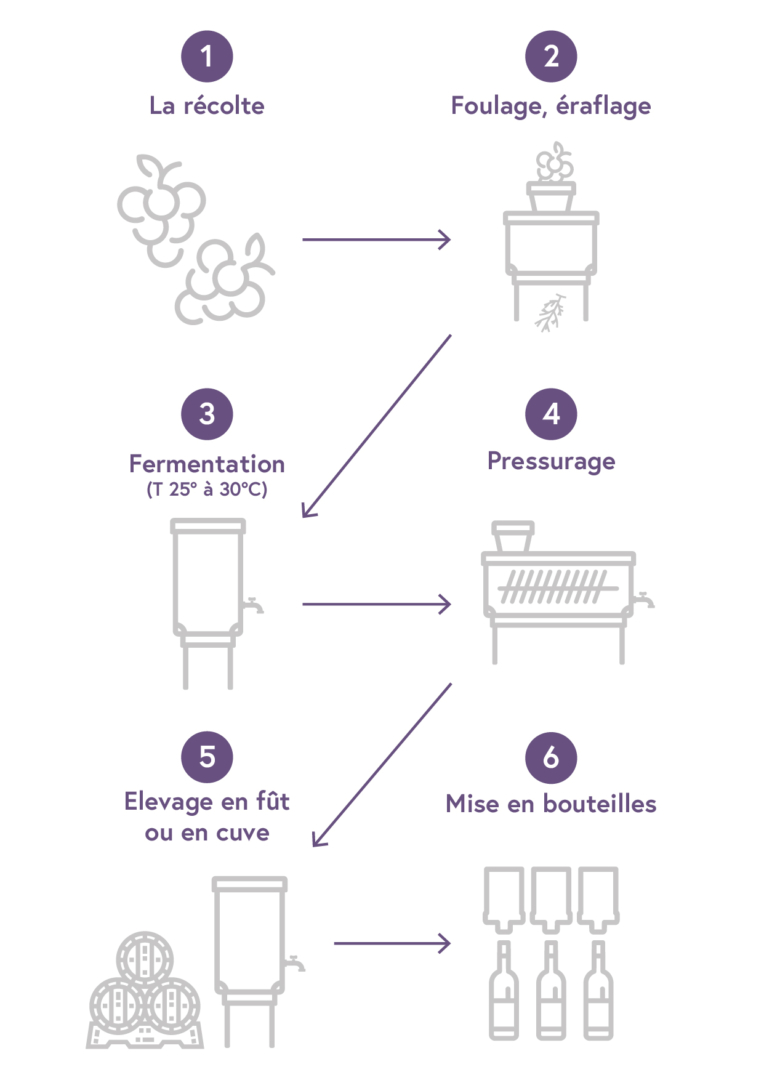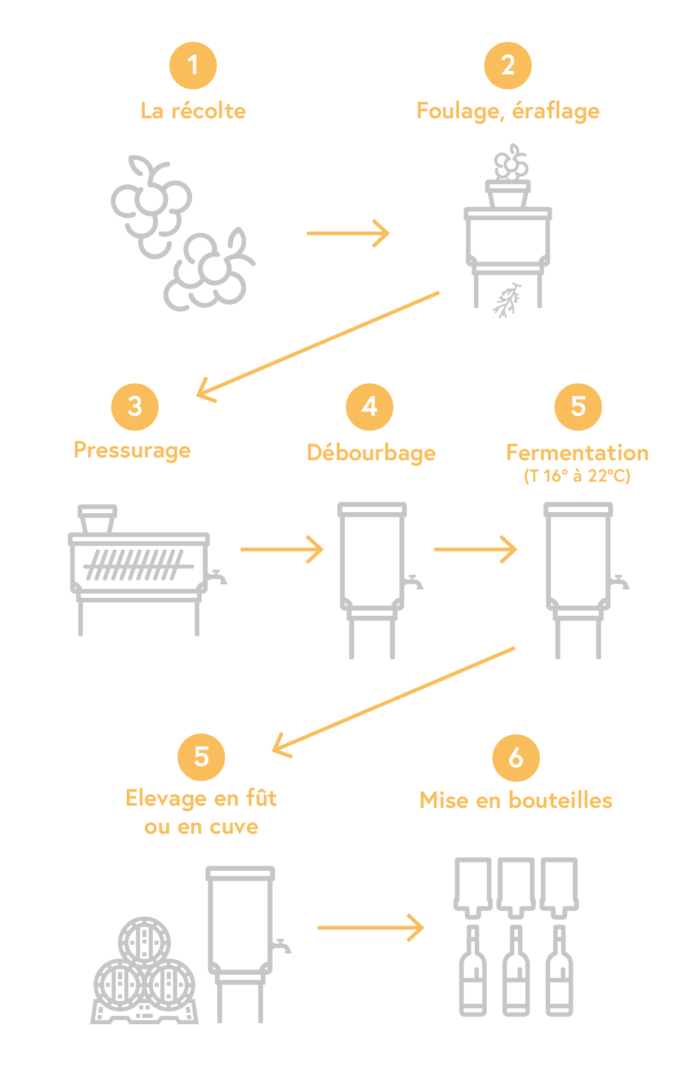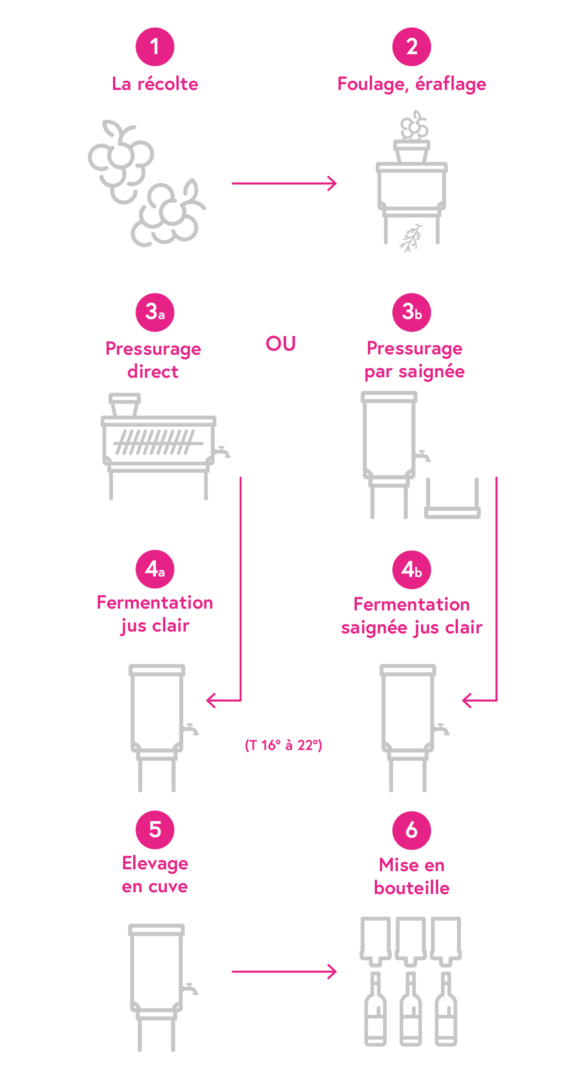AOP Côtes du Rhône et Côtes du Rhône Villages
(since 2017)
Bourg-Saint-Andéol, Saint-Just d’Ardèche, Saint-Marcel d’Ardèche, and Saint-Martin d’Ardèche.
AOP Côtes du Vivarais
(since 1999)
Bidon, Gras, Larnas, Labastide de Virac, Orgnac l’Aven, Saint-Montan, Saint-Remèze, Lagorce, Vinezac – and 5 areas in the Gard department.
IGP Ardèche et IGP Ardèche mention Coteaux de l’Ardèche
LANDSCAPE
The vineyards are situated on the hill slopes and ancient terraces at the meeting point of the Ardèche and Rhône rivers. These hill slopes are interspersed by valleys which enhance the landscape and shelter the great expanses of vines.
TERROIR
The soil is set upon ancient and very stony alluvial deposits from the river, rising from 40 to 145 metres in three levels of terraces and two main soil types: pebbles from the Rhône which are well-suited to producing red wines to lay down, and soft ochre-coloured loess soil which is good for whites, rosés and light reds. Grenache and Syrah are the most frequent blends. The wines are fresh, full-bodied and balanced, with delicate tannins.
VARIETALS
The criteria of AOP Côtes du Rhône authorises 13 varietals, some qualified as principal varietals (Grenache, Syrah and Mourvèdre), and others as secondary varietals. The Syrah varietal was added only in the 1960s. It has been progressing strongly for over a decade now. For white wines the principal varietals are Grenache blanc, Clairette, Marsanne, Roussanne, Bourboulenc and Viognier.
LANDSCAPE
The vineyards are situated on either side of the famous GORGES OF THE ARDÈCHE on the Plateau des Gras, at an altitude of between 100 and 200 metres. Set amongst the olive trees and green oaks, the Côtes du Vivarais vineyards enjoy the Mediterranean climate and the influence of the Mistral wind which helps the grapes to ripen well.
TERROIR
The vines grow on shallow chalky soil made up of crushed stone and marl-chalk, which is quickly warmed up in springtime and holds the heat captured during the day to release it during the night. The sub-soil is full of hidden treasures: caves, pitches and resurgent springs.
VARIETALS
The 3 colours exist in AOP Côtes du Vivrais with the following authorised varietals: for red, Grenache and Syrah; for rosé, Grenache, Syrah and Cinsault; and for white, Clairette, Grenache blanc, Marsanne and Viognier.
LANDSCAPE
Thanks to the geological wealth of Ardèche, the IGP Ardèche offers connoisseurs a wide range of elegant and authentic wines which proudly represent the colours of their territory. They grow in 339 villages throughout the department for the IGP Ardèche and 150 villages in Southern Ardèche for the IGP Ardèche mention Coteaux de l’Ardèche.
TERROIR
The mosaic of terroirs in Ardèche allows these IGPs to express their creativity and offer a great variety of wines for all tastes and every occasion. These designations represent the true identity of the terroirs of Southern Ardèche. Today the IGP Ardèche represents 90% of production in Southern Ardèche, which makes it the region’s highest producing IGP.
VARIETALS
The IGP wines are made either from a single varietal or from a blend. Each IGP wine is innovative and creative. The number of varietals authorised in each wine is often greater than for AOP wines. This flexibility offers a wider scope of expression and above all, for the winegrowers, more freedom in the blending. For consumers, they are the chance to discover original and affordable wines. The reds are often made from a single varietal, generally Merlot, Syrah, Cabernet Sauvignon and Gamay. The rosés are mostly made from a blend of varietals, generally Grenache, Syrah, Merlot and Cabernet Sauvignon. The whites are both blended and made from a single varietal, the main ones being Viognier, Chardonnay and Sauvignon.
AOP Côtes du Rhône et Côtes du Rhône Villages
(since 2017)
Bourg-Saint-Andéol, Saint-Just d’Ardèche, Saint-Marcel d’Ardèche, and Saint-Martin d’Ardèche.
LANDSCAPE
The vineyards are situated on the hill slopes and ancient terraces at the meeting point of the Ardèche and Rhône rivers. These hill slopes are interspersed by valleys which enhance the landscape and shelter the great expanses of vines.
TERROIR
The soil is set upon ancient and very stony alluvial deposits from the river, rising from 40 to 145 metres in three levels of terraces and two main soil types: pebbles from the Rhône which are well-suited to producing red wines to lay down, and soft ochre-coloured loess soil which is good for whites, rosés and light reds. Grenache and Syrah are the most frequent blends. The wines are fresh, full-bodied and balanced, with delicate tannins.
VARIETALS
The criteria of AOP Côtes du Rhône authorises 13 varietals, some qualified as principal varietals (Grenache, Syrah and Mourvèdre), and others as secondary varietals. The Syrah varietal was added only in the 1960s. It has been progressing strongly for over a decade now. For white wines the principal varietals are Grenache blanc, Clairette, Marsanne, Roussanne, Bourboulenc and Viognier.
AOP Côtes du Vivarais
(since 1999)
Bidon, Gras, Larnas, Labastide de Virac, Orgnac l’Aven, Saint-Montan, Saint-Remèze, Lagorce, Vinezac – and 5 areas in the Gard department.
LANDSCAPE
The vineyards are situated on either side of the famous GORGES OF THE ARDÈCHE on the Plateau des Gras, at an altitude of between 100 and 200 metres. Set amongst the olive trees and green oaks, the Côtes du Vivarais vineyards enjoy the Mediterranean climate and the influence of the Mistral wind which helps the grapes to ripen well.
TERROIR
The vines grow on shallow chalky soil made up of crushed stone and marl-chalk, which is quickly warmed up in springtime and holds the heat captured during the day to release it during the night. The sub-soil is full of hidden treasures: caves, pitches and resurgent springs.
VARIETALS
The 3 colours exist in AOP Côtes du Vivrais with the following authorised varietals: for red, Grenache and Syrah; for rosé, Grenache, Syrah and Cinsault; and for white, Clairette, Grenache blanc, Marsanne and Viognier.
IGP Ardèche et IGP Ardèche mention Coteaux de l’Ardèche
LANDSCAPE
Thanks to the geological wealth of Ardèche, the IGP Ardèche offers connoisseurs a wide range of elegant and authentic wines which proudly represent the colours of their territory. They grow in 339 villages throughout the department for the IGP Ardèche and 150 villages in Southern Ardèche for the IGP Ardèche mention Coteaux de l’Ardèche.
TERROIR
The mosaic of terroirs in Ardèche allows these IGPs to express their creativity and offer a great variety of wines for all tastes and every occasion. These designations represent the true identity of the terroirs of Southern Ardèche. Today the IGP Ardèche represents 90% of production in Southern Ardèche, which makes it the region’s highest producing IGP.
VARIETALS
The IGP wines are made either from a single varietal or from a blend. Each IGP wine is innovative and creative. The number of varietals authorised in each wine is often greater than for AOP wines. This flexibility offers a wider scope of expression and above all, for the winegrowers, more freedom in the blending. For consumers, they are the chance to discover original and affordable wines. The reds are often made from a single varietal, generally Merlot, Syrah, Cabernet Sauvignon and Gamay. The rosés are mostly made from a blend of varietals, generally Grenache, Syrah, Merlot and Cabernet Sauvignon. The whites are both blended and made from a single varietal, the main ones being Viognier, Chardonnay and Sauvignon.
Emblematic Varietals
Chatus
This was the main varietal grown in the 19th century on the border of the Cévennes and the Lower Vivarais. Cited by Olivier de Serres, it grew very well on this sandstone earth with deep sub-soil. After being almost completely wiped out by the phylloxera outbreak in the 1880s, only a few parcels were spared and preciously preserved. Some of these vines, which are now over a hundred years old, permitted the revival of this famous wine which is now the pride of the Cévennes winegrowers. Chatus produces a very original and tannic wine. It develops a very special character which is just superb with strong-flavoured red meats and Provencal cuisine.
Plan Brunel
Discovered in 1982 by Léon Brunel, this varietal comes from a spontaneous intraspecific hybridisation of Grenache noir and Jurançon noir. It entered the official catalogue of varietals in 2011. It gives wines that are very dark in colour, full-bodied, with notes of ripe red berries and vigorous tannins.
Varietals
Even if red wines still represent the majority of production, rosé and white wines have found their place on the tables of Ardèche. The wealth and diversity of terroirs allow a host of varietals to flourish and produce sunny and generous reds, rich and fresh whites, and complex and fruity rosés.
The main varietals that we find in the wines of Southern Ardèche are:
| Cépages | Vins | Arômes | Dégustation |
|---|---|---|---|
| CABERNET SAUVIGNON | ROUGE, ROSÉ | Humus, terre, poivron, fruits rouges | Frais, sec et fruité |
| CHARDONNAY | BLANC | Fruits secs, floral, noisette, froment | Fruité, rond, gras, aromatique |
| CHATUS | ROUGE | Fruits rouges et petits fruits noirs | Tannique et frais, mure |
| CINSAULT | ROUGE, ROSÉ | Un peu animal | Fruité et assez souple |
| CLAIRETTE | BLANC | Floral | Peu acide, souple et parfois corsé |
| GAMAY | ROUGE | Fruité, floral frais | Fruité, frais, souple |
| GRENACHE | ROUGE, ROSÉ | Garrigue, fruits rouges mûrs | Corsé, rond, tannins fondus |
| GRENACHE BLANC | BLANC | Floral | Assez rond, fruité |
| MARSANNE | BLANC | Fruits secs, floral | Assez riche, corsé |
| MERLOT | ROUGE, ROSÉ | Fruits rouges mûrs, un peu animal, cuir | Fruité mûr, assez corsé |
| MOURVÈDRE | ROUGE | Fruits secs, écorce de liège | Tannins assez secs, bonne acidité, structuré |
| PLAN BRUNEL | ROUGE | Fruits rouges mûrs | Tannique, charnu |
| ROUSSANNE | BLANC | Floral frais | Fin, élégant et frais |
| SYRAH | ROUGE, ROSÉ | Baies Sauvages, réglisse, violette, épices | Fruité, tanins fins, sauvage, menthe poivrée |
| VIOGNIER | BLANC | Violette, abricot | Fruité, souple, très fin |
The main varietals that we find in the wines of Southern Ardèche are:
| Cépages | Vins | Arômes | Dégustation |
|---|---|---|---|
| CABERNET SAUVIGNON | ROUGE, ROSÉ | Humus, terre, poivron, fruits rouges | Frais, sec et fruité |
| CHARDONNAY | BLANC | Fruits secs, floral, noisette, froment | Fruité, rond, gras, aromatique |
| CHATUS | ROUGE | Fruits rouges et petits fruits noirs | Tannique et frais, mure |
| CINSAULT | ROUGE, ROSÉ | Un peu animal | Fruité et assez souple |
| CLAIRETTE | BLANC | Floral | Peu acide, souple et parfois corsé |
| GAMAY | ROUGE | Fruité, floral frais | Fruité, frais, souple |
| GRENACHE | ROUGE, ROSÉ | Garrigue, fruits rouges mûrs | Corsé, rond, tannins fondus |
| GRENACHE BLANC | BLANC | Floral | Assez rond, fruité |
| MARSANNE | BLANC | Fruits secs, floral | Assez riche, corsé |
| MERLOT | ROUGE, ROSÉ | Fruits rouges mûrs, un peu animal, cuir | Fruité mûr, assez corsé |
| MOURVÈDRE | ROUGE | Fruits secs, écorce de liège | Tannins assez secs, bonne acidité, structuré |
| PLAN BRUNEL | ROUGE | Fruits rouges mûrs | Tannique, charnu |
| ROUSSANNE | BLANC | Floral frais | Fin, élégant et frais |
| SYRAH | ROUGE, ROSÉ | Baies Sauvages, réglisse, violette, épices | Fruité, tanins fins, sauvage, menthe poivrée |
| VIOGNIER | BLANC | Violette, abricot | Fruité, souple, très fin |



